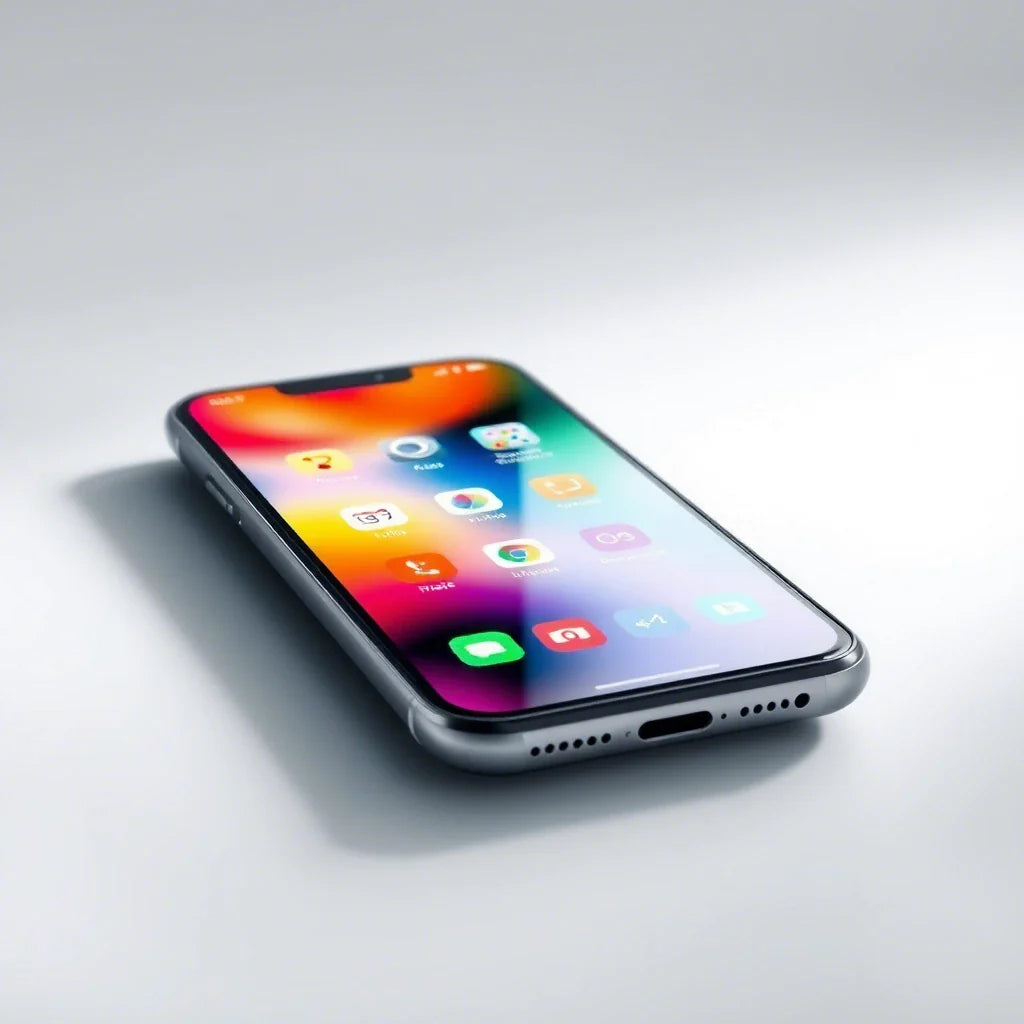Inside a Smartphone
A smartphone's core is a System-on-Chip (SoC), which integrates the central processing unit (CPU), graphics processor (GPU), memory controllers, and often the cellular modem. Key hardware components include:
- CPU/GPU and Memory: The "brain" of the phone, responsible for running apps and processing data. RAM (Random Access Memory) handles active applications, while flash storage holds files and the operating system.
- Battery: Typically a rechargeable lithium-ion cell that provides power.
- Display/Touchscreen: The primary interface for user interaction.
- Cameras and Sensors: Used for capturing photos and videos, detecting motion, orientation, and proximity.
- Wireless Modem and Antennas: Enable cellular, Wi-Fi, Bluetooth, and GPS connectivity.
Cellular Communication
Mobile phones rely on cell towers (base stations), which form the cellular network.
- Cells: The coverage area is divided into geographic "cells," each served by a tower with antennas. Phones communicate with the network via the nearest cell tower.
- Frequency Channels: Within each cell, phones communicate by radio on assigned frequency channels, allowing for efficient reuse of spectrum.
- Seamless Handoff: As you move, the network automatically transfers your call or data connection from one tower's cell to another, ensuring continuous service.
SIM Card
Every phone uses a SIM (Subscriber Identity Module) card, a small chip storing your unique subscriber ID (IMSI) and security keys. The mobile network uses this information to identify and authenticate you, linking your phone to your account and enabling calls and data services.
4G vs. 5G
- 4G (LTE): Enabled widespread high-speed mobile internet with typical peak rates around 100 Mbps.
- 5G: The latest generation, using new radio technologies for significantly higher speed, capacity, and responsiveness. It utilizes multiple frequency bands (low, mid, and high/mmWave) to balance coverage and throughput. High-frequency 5G (mmWave) offers much higher data capacity in dense areas, while low-band 5G provides wider coverage. In practice, 5G delivers 5-10 times faster data and greatly reduced latency compared to 4G.
Signal Transmission and Reception
When you use your phone for calls or data, the phone's baseband processor (radio modem) manages the communication.
- Transmission: Your voice or data is digitized by the CPU and stored in memory. The radio modem then encodes and modulates this data onto a radio-frequency carrier and sends it through the antenna.
- Reception: The phone's receiver antenna picks up incoming radio waves from the tower. The baseband processor demodulates and decodes these signals into digital data, which is then sent to the speaker, display, or relevant applications. The modem's digital signal processor (DSP) effectively converts between raw radio frequencies and the digital information your phone uses.
Operating System and Apps
Smartphones run a mobile operating system (like Android or iOS) that manages hardware and provides the user interface.
- OS Boot-up: When the phone powers on, the OS loads and displays the home screen with app icons.
- Resource Management: The OS allocates CPU, memory, and other resources to applications, handles touch input, and manages phone functions like dialing, camera, and network connections.
- Apps: Users install applications (games, browsers, messaging, etc.) that run on top of the OS. Each app uses the OS's services and hardware (CPU, GPU, network, sensors) to perform its function, with the OS ensuring apps are isolated and responsive.
Additional Connectivity
Phones include other radios for local connections:
- Wi-Fi: A Wi-Fi radio (typically 2.4/5 GHz) connects to local wireless networks and the internet. The phone communicates with a Wi-Fi router over radio, which then connects to the internet via cable.
- Bluetooth: A short-range (around 10 meters) radio link for pairing with peripherals like earbuds, speakers, keyboards, or car systems. It uses 2.4 GHz and is designed for low-power, nearby connections.
- GPS (Global Positioning System): A built-in GPS receiver picks up signals from orbiting satellites. By measuring time-of-flight from at least four satellites, the phone's GPS chip calculates its 3D location (latitude, longitude, altitude). GPS works independently of cell service and is essential for navigation and mapping apps.
- NFC (Near-Field Communication): A very short-range radio (about 4 cm maximum) for quick data exchanges. NFC is used for contactless payments and ticketing, where encrypted data is transmitted by induction when you tap your phone on a terminal or tag.
Power Management and Battery
Most smartphones use lithium-ion batteries.
- Chemistry: Inside, lithium ions move between a lithium-based cathode and a carbon (graphite) anode, with an electrolyte in between. During charging, ions move from the cathode to the anode; during discharge, they flow back, releasing electrical energy to power the phone.
- Capacity: Battery capacity is measured in milliamp-hours (mAh) or watt-hours, with higher numbers indicating more stored energy and longer usage per charge.
- Power Optimization: Phones manage power carefully by dimming or turning off the screen when idle, slowing down the CPU under low load, and shutting down unused components. "Battery saver" modes further restrict background activity to conserve energy.
Recent Advances in Mobile Technology
- Foldable Smartphones: These devices feature flexible OLED screens, allowing them to fold into a compact form or unfold into a larger tablet-sized display.
- On-device AI: Modern phones include specialized AI hardware (Neural Processing Units, NPUs) to perform machine learning tasks directly on the device. This enables features like real-time image enhancement, voice recognition, and language translation without sending data to the cloud, improving speed and privacy.
-
Satellite Connectivity: Some recent phones can connect directly to satellites. For example, iPhone 14 and later support emergency texting via satellite when cellular service is unavailable. Future advancements, like SpaceX's "Direct to Cell" satellites, aim to enable broader texting and even calling capabilities from remote areas by acting as cell towers in space.
Unleash Your Phone's Potential with Gadgetshieldz!
